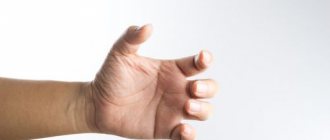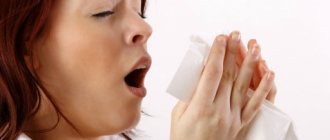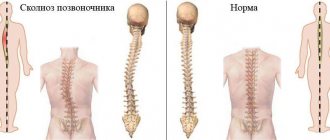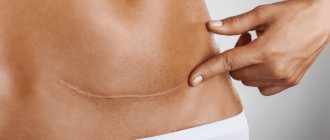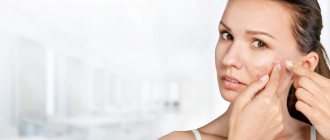What are rosacea and rosacea?
Rosacea and rosacea are types of vascular pathologies that are characterized by the appearance of dilated blood vessels. As a result, the skin acquires a reddish tint.
Rosacea is a chronic skin lesion that occurs with rashes and redness. That is why the pathology received a name that speaks for itself - pink acne.
Today, there is no exact explanation for why rosacea occurs. The disease can be triggered by diet, hormone imbalance, or predisposition. Alcohol consumption, stress, hypothermia, allergies - any factors that provoke vasodilation - contribute to the occurrence of rosacea.
Cuperosis is an expansion of small capillaries that causes redness of the skin. Due to expansion, the walls of blood vessels become thinner and lose their elasticity. The vessels fill with blood, giving the skin a reddish tint. If the disease progresses, stable networks of blood vessels form on the skin, covering large areas of the face.
Cuperosis can be attributed to a physiological feature that requires treatment. Prolonged manifestations of rosacea lead to a lack of oxygen and nutritional components in skin cells. The skin loses water, becomes dry, its color deteriorates, and aging processes begin prematurely.
What do rosacea and rosacea look like? Spider veins and spider veins appear on the skin. They often occur in the T-zone. Those with sensitive, fair skin are most susceptible to vascular pathologies.
Signs of development of vascular disorders
Facial redness
This is the initial stage of vascular disorders, which is called erythrosis. Occurs under certain circumstances and provoking factors. Sometimes it appears for no reason. The wings of the nose, cheeks and chin are most prone to the onset of the disease. The sensitivity of the skin in these areas increases and it becomes red. A sick person complains of fever, itching, and tingling. This state can last from a couple of minutes to two hours. This skin pathology on the face can spread to the neck.
Constant redness
In problem areas there is already a constant state of redness of the skin. Spider veins and stars begin to appear, as well as pigmentation.
This condition is similar to a flush or sunburn that does not go away.
Skin changes
The skin becomes thinner, dries out, and has a grayish color. Inflammation begins in problem areas, sometimes they become covered with a rash. The disease progresses gradually and its third stage without treatment occurs 20-30 years from the onset of the pathology.
What are the differences between rosacea and rosacea?
What rosacea and rosacea are is easy to understand. But the diseases are difficult to distinguish from each other without qualified help. Couperosis or rosacea can be determined by symptoms. The main difference is that rosacea is never accompanied by purulent inflammation, the skin is smooth, without compactions.
Couperosis and rosacea on the face have differences in symptoms. With rosacea, small and large blood vessels are affected, causing the skin to acquire a reddish tint. In rare cases, rosacea is accompanied by a fiery skin color - there is a feeling that the skin is burning, but in fact there are no painful symptoms.
Unlike rosacea, rosacea is accompanied by painful sensations. In addition to redness, purulent inflammation and uneven relief are formed. The difference between rosacea and rosacea on the face is itching.
The difference between rosacea and rosacea is the course of the disease. Rosacea occurs in several stages:
- Erythematous. Temporary redness of the skin occurs. Subsequently, the redness becomes persistent.
- Papulopustular. In the area of redness, rashes filled with reddish liquid appear. They arise due to metabolic disorders in the skin and vasodilation. Blood seeps into the surrounding tissues, coloring them in a characteristic color.
- Phimosis. Densified nodules and plaques form on the skin.
- Rhinoform. Accompanied by an increase in the size of the nose. This stage is typical only for men.
Symptoms
Although this disease can affect any part of the skin, it most often manifests itself on the face - on the wings of the nose, cheeks and chin. This is due to the fact that in these areas the skin is thin and elastic.
This type of vascular network does not hurt, and there is rarely a feeling of itching or burning. It happens that after the appearance of such stars, the process slows down and stops - if you do not injure the skin and care for it properly, this does not cause any discomfort to the patient (or only aesthetic discomfort). But in some cases, the disease progresses and becomes more serious: the affected areas of the skin begin to turn blue, the skin or limbs (if rosacea is on the legs) swell, and inflammation begins.
Even if physically the symptoms of rosacea do not bother you, but it has appeared recently, you need to consult a dermatologist: if possible, find out the reasons for the deviation and understand whether there is any additional danger in it.
How is rosacea diagnosed?
Regardless of the nature of the disease (rosacea, demodicosis, rosacea), treatment is preceded by diagnosis. A cosmetologist will determine whether the patient has rosacea or rosacea. An examination, blood test, and in some cases, scrapings of the affected skin areas will be required. If necessary, the doctor will prescribe an ultrasound of the internal organs to rule out diseases that can provoke skin reactions.
The task of a cosmetologist is not only to eliminate the external manifestations of rosacea on the skin, but also to establish the cause of the disease. To do this, it is necessary to examine the state of the gastrointestinal tract and endocrine system - to exclude gastritis, colitis, hormone imbalance, etc.
Stages on the face, complications
It is customary to distinguish four stages of rosacea:
- 1st. As a rule, the vessels do not appear yet or there are only two or three of them - a person simply often experiences redness in the face or other parts of the body. After severe redness, the skin can sometimes dry out (more rarely, peel off).
- 2nd. The redness of the cheeks is more obvious (often when washing or touching), the vascular pattern is more active. Some patients have a tingling or burning sensation.
- 3rd. The redness in the affected areas does not disappear anywhere - it is constantly on the skin. Severe dryness of the skin is observed, and an inflammatory reaction may begin.
- 4th. All facial vessels are already involved in the process; there is a spasmodic effect, due to which certain areas of the skin become pale.
The health and life of the patient with this disease is not in danger. But it is important to understand that rosacea is the enemy of young skin. The aging process begins to develop more actively, the skin loses its attractive appearance. This has different levels of significance for patients of different ages. If the problem occurs in adulthood and old age, many simply adhere to the minimum recommendations of doctors and do not pay too much attention to it.
But rosacea in children and young people requires a more serious approach - such patients still have a whole life ahead, so the aesthetic aspect is also very important for them.
In addition, it is important to remember that in some cases this disease still indicates problems in the body that can be dangerous. And in order to avoid problems, it is necessary to get advice from specialists.
What should you not eat if you have rosacea?
Rosacea and rosacea on the face are diseases that require a comprehensive approach to treatment. First of all, this concerns nutrition. To get rid of rosacea, you need to exclude dangerous and harmful foods from your diet:
- Sweet and floury. They contain sugars that cause inflammation
- Dairy products. Progesterone, which dairy products are rich in, enhances the functions of the sebaceous glands - there are more purulent inflammations on the skin.
- Alcohol. It has been scientifically proven that alcoholic drinks themselves do not cause rosacea, but aggravate the course of the disease. Alcohol dilates blood vessels and causes an additional blush on the face.
- Products containing caffeine (tea and coffee). They stimulate the production of the hormone cortisol, which triggers stress. Stressful situations often lead to inflammation on the skin.
- Canned, pickled, salted, fried and spicy foods. They lead to acne on the skin, dilate blood vessels, and weaken the immune system.
- Citrus and sweet fruits. Causes skin inflammation.
Diagnostics
To determine rosacea on the body, a dermatologist does not need much research. But it is important for patients to understand that they cannot do this on their own; it is necessary to differentiate this condition from others that may be more dangerous.
For diagnostics the following are used:
- Examination, history taking and dermatoscopy.
- General urine and blood tests, biochemical blood tests, as well as tests for certain types of hormones.
- Ultrasound of the thyroid gland and abdominal organs (optional).
If a specialist suspects hidden diseases, this list may expand.
Can rosacea be cured permanently?
Regardless of whether it is telangiectasia, rosacea or rosacea, treatment should be comprehensive. The peculiarity of rosacea is that despite external signs, the causes are hidden deep in the body. And to get rid of rosacea forever, you need to identify and eliminate the cause of the disease.
Treatment of rosacea and rosacea is carried out in several directions. As a rule, an endocrinologist and cosmetologist develop a comprehensive treatment plan that is aimed at quickly eliminating the external manifestations of the disease and deeply treating the causes of rosacea.
Treatment of rosacea and rosacea consists of the following steps:
- Proper skin care. Careful hygiene, selection of cosmetics, daily use of cream with SPF protection. Acid peels, products containing alcohol, and rough scrubs are contraindicated for rosacea.
- Therapeutic treatment. Based on the use of antibacterial and antiseptic agents that eliminate the causes and consequences of acne.
- Drug treatment. Depending on the indications, the patient may be prescribed medications, hormonal drugs, etc.
- Hardware treatment. Elimination of spider veins using hardware methods.
Types and causes of rosacea
Congenital rosacea manifests itself:
- when the immune system is disrupted, when pathogenic microorganisms enter the body and release a substance that dilates blood vessels and capillaries;
- rosacea may appear as a result of congenital Rond-Oslan disease (when the walls of the capillaries relax);
- Very often, vascular weakness is inherited genetically from close relatives.
What cosmetic procedures can be done for rosacea?
When treating rosacea and rosacea on the face, you cannot do without cosmetic procedures. But not all of them are allowed for vascular pathologies.
The following help to effectively get rid of rosacea and rosacea:
- Phototherapy. Pulsed light affects pathological tissues. The targets of the rays are microorganisms and altered capillaries. Under the influence of photo flashes, old collagen fibers are destroyed and the production of new ones is started. The main feature of phototherapy is the ability to glue blood vessels. The rays heat the vessel to 60 degrees, which provokes blood clotting and the vessels become empty.
- Plasma therapy. The procedure is based on the use of autogenous plasma. Plasma therapy triggers skin cell restoration processes, normalizes metabolism, and saturates the skin with useful substances. In the dermis, collagen synthesis is enhanced and inflammation processes are reduced.
Mesobotox against rosacea
Botulinum toxin, getting under the skin, begins to affect the hormone serotonin, as well as ion channels responsible for the appearance of many signs of rosacea (the effect of dilated blood vessels) and its chronic form - rosacea.
This allows you to normalize neurovascular disorders and, thereby, reduce the severity of redness and uneven skin texture. Botulinum toxin also has the ability to reduce the hyperactivity of subcutaneous vessels and normalize blood microcirculation in them. This leads to a decrease in persistent erythema and a significant decrease in the intensity of redness as a result of sudden flushes of blood to the face, which often occur in patients with rosacea during physical activity, stress, exposure to hot water, wind, frost and other negative factors.
Can rosacea be treated with laser?
Couperosis and rosacea can be eliminated with laser. Vascular networks are cauterized with laser beams. The method is effective at different stages of the disease - both at the initial and in advanced cases.
Laser beams quickly and permanently eliminate redness and spider veins from the skin surface. The number of sessions depends on the stage of rosacea and rosacea.
Laser removal of rosacea and rosacea is an effective method for spider veins. The procedure allows you to get a pronounced result and does not require a long recovery period. The effect of the procedure lasts for several years.
Treatment of rosacea in the salon
In the fight against spider veins on the face, three aesthetic tactics have proven themselves to be excellent, which can significantly minimize such a defect:
- Laser therapy:
a laser is applied to an area of skin, the site of exposure is heated to the required depth, the damaged capillary is “sealed” and smoothed. - Photorejuvenation:
a similar result is achieved through light exposure of the skin. - Ozone therapy:
according to the principle of mesotherapy, it involves the introduction under the skin of an ozone-oxygen mixture that destroys the damaged capillary, but has a beneficial effect on the circulatory system as a whole.
Is it possible to do a chemical peel for rosacea?
Couperosis or rosacea on the face are diseases that require careful skin care. Aggressive chemical peels can only worsen the disease. Unprofessional acid peeling provokes persistent redness - the skin takes a long time to heal after the procedure. An unskilled approach to therapy and an illiterate selection of home remedies will aggravate the course of the disease. A cosmetologist knows how to treat rosacea and rosacea on the face.
For rosacea and rosacea, only delicate peels are indicated (for example, using mandelic or lactic acid). Antioxidant monopilings are prescribed for the erythematous form of rosacea. Superficial almond peeling does not cause peeling or burning.
For the pustular form, combinations of azelaic and lactic acid can be used. They inhibit the production of reactive oxygen species and regulate the formation of secretion from the skin glands. The doctor selects the acid composition for peeling individually depending on the nature and course of the disease.
Cuperosis and vascular network on the face
As we mentioned earlier, this is a superficial manifestation of blood vessels on our skin. Many things can provoke this effect. An elementary increase in temperature, a contrasting transition after a winter street and frost into a warm room, excitement, stress or another reaction of the body when blood circulation increases and blood vessels lose their elasticity and expand. All this can appear on the surface of the skin in the form of unpleasant reddish “patterns”. They are often accompanied by side effects that further negatively affect the condition of the skin: the skin “burns” and dries, peeling and itching appear. Sometimes such irritation even leads to skin injury. All this is very sad and does not contribute to a good mood and confidence in one’s beauty.
Make an appointment at the clinic on Vasilyevsky Island
Sign up
What is rosacea and how to get rid of it?
Cuperosis can be either an independent manifestation of changes in the skin or a sign of serious diseases. Cuperosis occurs in several stages:
- Rapid redness for no obvious reason. After a while, the redness disappears without consequences - the vessels are still elastic to restore their original state.
- A characteristic pattern of blood vessels appears on the skin. This is a sign that the blood vessels cannot return to normal.
- Chronic blood circulation disorders and lack of nutrition of skin cells.
A cosmetologist knows how to treat rosacea and rosacea. You can get rid of skin pathologies in a comprehensive manner by identifying the cause of the disease. If rosacea is caused by a disease of the internal organs, they need to be treated first. The use of only external agents will eliminate the manifestations of rosacea, but will not protect against the appearance of new spider veins. A combination of therapy methods that complement each other will achieve lasting results.
Vessels on the face, redness and swelling. Before and after
The procedure is not very pleasant, but tolerable, and most importantly, quite fast. Rehabilitation takes an average of 24 hours; in rare cases, there may be redness and swelling for up to 3-5 days. Therefore, if you have not undergone a similar procedure before, it is better to schedule it before a couple of days off. Usually 3-4 procedures are required with an interval of 3-5 weeks, the effect is often visible after 1-2 procedures.
What should you not do if you have rosacea?
Rosacea and rosacea, although not the same thing, have similar limitations. If you have rosacea, you should avoid the following:
- baths and saunas
- artificial tanning in a solarium
- traumatic facial cleansing
- laser resurfacing
- cosmetics with acids and alcohol
- scrubs and peelings with hard particles
- thermal masks
- contrasting washes
Acne, rosacea and rosacea should be treated by eliminating harmful foods from the diet:
- alcohol and carbonated drinks
- baked goods, sweets and cakes
- all types of red meat
- canned, spicy and salty foods
How to get rid of spider veins on the face: what you can and cannot do
Before we talk about methods for solving this problem, it is worth talking about what procedures can be done and what should be abandoned. Compliance with such basic safety precautions will help you not harm yourself and quickly get rid of traces of rosacea.
Prohibited:
- Do vacuum facial cleansing.
- Use too cold and too hot water for washing.
- Use alcohol-containing care products.
If you want to get the maximum effect from treatment, then remember that each case of the disease is individual. Visit both a cosmetologist and your attending physician, undergo all the necessary tests, identify the cause of the disease, and only then proceed with action.
Symptoms of the disease
We found a unique organization in the US, the National Rosacea Society, dedicated to improving the lives of the 16 million Americans who suffer from this common but poorly understood skin condition.
The organization’s website contains comprehensive information that not every specialist knows.
Primary signs of rosacea
- Facial flushing (flushing) Many people with rosacea experience frequent facial flushing or flushing. This facial flushing may come and go, and is often the earliest sign of the disorder.
- Persistent redness Persistent facial redness is the most common individual symptom of rosacea and can resemble flushing or a sunburn that does not go away.
- Lumps/Lumps/Bumps and Pimples Small red solid bumps or pus-filled pimples often develop. Although they may resemble acne, there are no blackheads and there may be a burning or chilling sensation.
- Visible Blood Vessels For many people with rosacea, small blood vessels become visible on the skin.
Other potential signs and symptoms
- Eye irritation Many people with rosacea may have eyes that are irritated and appear watery or bleeding, a condition known as ocular rosacea. The eyelids may also become red and swollen, and styes are common. Severe cases can result in corneal damage and vision loss without medical attention.
- Burning or stinging sensations The face may often experience burning or stinging sensations. Itching or a feeling of tightness may also develop.
- Dry appearance The central part of the face may be rough and appear very dry.
- Plaques Raised red patches, known as plaques, raised above the surface of the skin and may develop without changes to the surrounding skin.
- Thickening of the skin The skin can become thickened and enlarged by excess tissue, most commonly on the nose. This condition, known as rhinophyma (a tumor-like, benign skin change), affects more men than women.
- Swelling Swelling of the face, known as edema, can accompany other signs of rosacea or occur independently.
- Signs not on the face Signs and symptoms of rosacea can also develop outside the face, most commonly on the neck, chest, scalp or ears.
Avoid temperature changes, this negatively affects blood circulation, which can lead to the development of rosacea.
Plastic surgeon Christopher Davidson
Capillary mesh on the face: tolerate or remove?
You probably know and have seen where such a mesh pattern on the face is most pronounced. Most often, patients come to us who have thin red lines of blood vessels appearing on their face. The cheeks, nose, and sometimes the chin or forehead are especially affected. This not only complicates the health situation and makes you think about the state of the cardiovascular system, but is also an aesthetic problem.
When thinking about removing capillary mesh on your face, you must understand that procedures and doctor’s advice alone will not be enough. It is important to minimize the impact of internal and external irritants to help your skin recover, strengthen and glow.
Modern clinics offer various ways to remove venous mesh on the face:
- photocoagulation (laser exposure);
- electrocoagulation (exposure to electric shock);
- phototherapy (there are different techniques);
- ozone therapy (exposure to ozone gas)
- sclerotherapy (introduction of special compounds directly into the vessels);
- radio wave surgery.
All methods and techniques have their own specifics. If you decide to remove the vascular network on your face, you should choose them together with a qualified specialist, preferably one who has a medical education and experience in working with similar cases. Don't be afraid to ask questions, because we are talking about your health and appearance.
In our clinic, all cosmetologists are educated in the medical field and know how to select the right treatment for spider veins. We practice laser removal. The method of using a laser to solve the problem of vascular pattern is called effective, powerful and safe.
How is Rosacea treated?
Because the signs and symptoms of rosacea vary from one patient to another, treatment must be tailored by the doctor to each individual case.
Drug therapy (oral)
Initially, the doctor must determine the cause of the disease. If the disease is associated with a person having problems in the internal organs, then he is prescribed medications that help eliminate them.
Oral therapy for redness is safe for long-term use.
Dermatologists often prescribe initial treatment with oral and topical therapy to control the condition immediately, followed by long-term use of topical therapy to maintain remission.
Medicines for rosacea
Doctors often prescribe pharmaceuticals such as Ascorutin, Vikasol, Troxevasin.
- Ascorutin is prescribed for severe rosacea. It is also used for the appearance of rosacea on the legs. Ascorutin contains such important elements as vitamin C and P. The course of administration depends on the severity and nature of the damage.
- Vikasol is a synthetic analogue of vitamin K. The body requires a small amount of it, so it is usually prescribed in small dosages. The drug gives the skin elasticity and improves blood circulation.
- Troxevasin capsules are prescribed to achieve the best effect. Often tablets are used in conjunction with ointment. The medicine is prescribed for a large area of damage.
The drugs are sold at pharmacies and their prices vary greatly.
| Name | Price |
| Askorutin | From 61 rubles |
| Vikasol | From 30 rubles |
| Troxevasin | From 209 rubles |
Ocular rosacea can be treated with antibiotics and other therapies.
Skin care
Patients should consult with their doctors to ensure that their skin care routine is compatible with their rosacea.
Patients are advised to cleanse their face with a mild and non-abrasive cleanser, then rinse with warm water and pat dry with a soft cotton towel.
Never pull or rub your face when washing your face, or use a rough sponge to cleanse your face.
Patients can use non-irritating skin care products as needed, and it is recommended that they protect their skin from sun exposure with sunscreen with an SPF of 15 or higher.
Cosmetics can be used to hide the effects of rosacea. To combat redness, you can use green makeup or green tinted foundations. This can be followed by a skin tone base with natural yellow undertones, while avoiding pink or orange colors.
How does green concealer work?
Basically, shades that are opposite each other on the color palette cancel each other out. If the skin is red, a green concealer might neutralize the look since green and red are opposites. In addition to green concealer, other popular shades include:
- peach (to cover dark circles)
- yellow (to hide stains)
- lavender (to brighten appearance)
Green concealer is usually used before applying foundation and foundation. Once you've covered your skin's imperfections with one or more shades from the correcting palette, you won't need to apply the usual amount of foundation.
Question answer
Laser surgery can be an effective way to treat spider veins. For many people who suffer from the condition, laser treatment can provide long-term relief from these unwanted spider veins.
No. Topical medications should be applied twice daily, morning and night. Allow the medicine to dry completely for 5-10 minutes. At this time, the medicine is quickly absorbed into the skin of the face. Then resume your regular skin care routine and activities. Sweating from hot weather or exercise the same day will not reduce the effectiveness of the topical medication.
Typically, the tube label or prescription attached to the package will indicate the expiration date. However, if you feel that your medicine is not working, it is time to consult your doctor. Topical medications are usually prescribed for use once or twice a day/every day/regularly. In a survey of more than 1,000 patients with rosacea, 74% said their condition worsened if they did not use medications as prescribed. Moreover, of those who comply with drug therapy, almost 70% say their health has improved.
Folk remedies for the treatment of rosacea
At home, you can prepare your own face masks using the following ingredients:
- Ginger. It slows down the aging process of the skin, strengthens the immune system and improves blood microcirculation in the vessels. For the mask you need 5 grams of ground ginger. It needs to be diluted with 100 ml of hot water. Cool the resulting composition and apply it to the face with cotton wool. Keep the mask on for 20 minutes and wash it off with water.
- Apple vinegar. It nourishes and cleanses the skin. It also has an antiseptic effect and improves skin regeneration. To make a mask, mix vinegar and water in a ratio of 1:4. Lubricate the problem area 1 to 2 times a day.
- Green clay. It tightens pores, improves metabolism, relieves swelling and redness of blood vessels. For the mask you need 1 tablespoon of clay. Mix it with water. The resulting composition is rubbed into the problem area and lasts for about 10 minutes. Then we wash our face with water.
- Lemon. A lemon mask improves metabolism, accelerates cell regeneration, saturates the skin with vitamin C and other nutrients. For the mask, squeeze lemon juice and add 2 tablespoons of olive oil to it. Apply the composition to gauze and apply to the face. It is important to remember that the mouth and eye area remains free. The mask lasts about 10 minutes, and then it is washed off with water. This is done once every 10 days.
It is important to remember that rosacea at an early stage may indicate the body’s predisposition to vasodilation. This increases the risk of varicose veins and stroke several times. To prevent this, a person needs to engage in prevention.
You can use folk remedies only after consultation with a cosmetologist. Does massage help with rosacea?
Cosmetologists note that you can get rid of stars with the help of lymphatic drainage massage. It reduces pressure in blood vessels, relieves redness and improves blood flow.
Experts note that when diagnosing rosacea there are clear contraindications, for example:
- use towels made of rough materials;
- do steam inhalations using essential oils;
- carry out manual facial cleansing and use hand massagers;
- performing lymphatic and Japanese massage. This is due to the fact that they are performed under pressure.
In turn, aerobics has a beneficial effect on the face, as evidenced by numerous positive reviews. You can get acquainted with the technique in the following video, gymnastics for the face by Carol Maggio:


